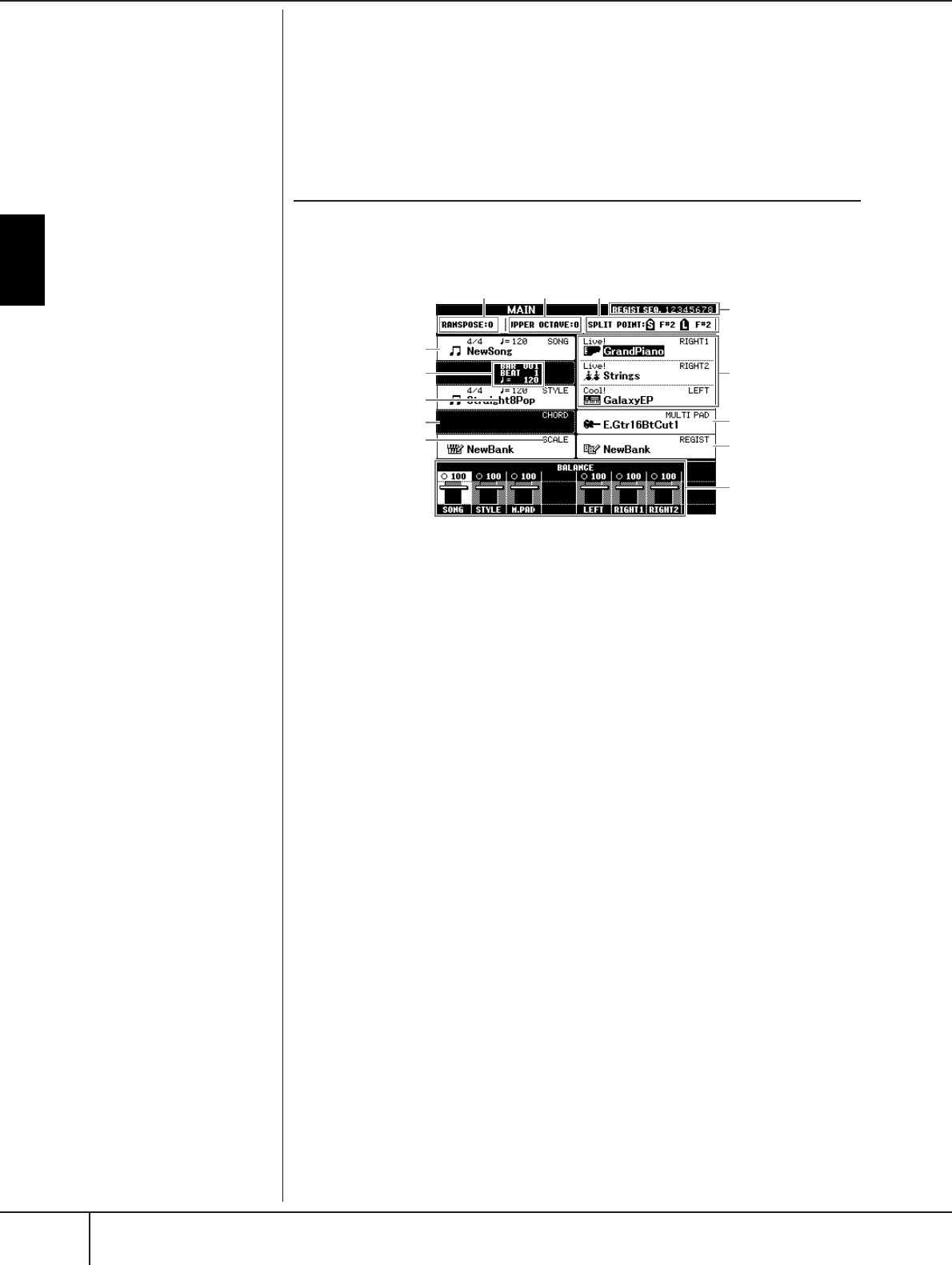
Basic Operation
Basic Displays (Main Display and File Selection Display)
PSR-OR700 Owner’s Manual
62
Basic Displays (Main Display and File
Selection Display)
There are two basic display types – Main and Selection. Here are explanations of
each display segment and its basic operation.
Main Display
The Main display shows the current basic settings of the instrument such as the cur-
rently selected Voice and Style, allowing you to see them at a single glance. The
Main display is the one you’ll usually see when you play the keyboard.
1 Song name and related information
Displays the currently selected Song name, time signature and tempo.
If the Song contains the chord data, the current chord name will be displayed in the
“CHORD” segment (see 4 below).
Pressing the [A] button calls up the Song Selection display (page 36).
2 BAR/BEAT/Tempo
Displays either the current position and tempo of the Song or the current bar and beat number of
Style playback.
3 Style name and related information
Displays the currently selected Style name, time signature and tempo. Pressing the [C]
button calls up the Style Selection display (page 46).
4 Current chord name
If the [ACMP] button is set to On, the chord specified in the chord section of the key-
board will be displayed.
5 Scale Tune Bank name
Displays the currently selected Scale Tune Memory.
6 Transpose
Displays the amount of transposition in semitone units (page 58).
7 Octave
The [UPPER OCTAVE] buttons allow the pitch of the keyboard to be shifted down or up
in octave steps. This shows the amount that the octave value is shifted.
8 Split Point
Split Points are specific positions (notes) on the keyboard that divide the keyboard into
separate sections. There are two kinds of Split Points: “S”, which separates the chord sec-
tion from the rest of the keyboard, and “L”, which divides the left-hand and right-hand
sections.
9 Registration Sequence
Appears when the Registration Sequence is active (page 134).
R
eturn
i
ng to t
h
e
M
a
i
n
di
sp
l
ay
Here’s a convenient way to
return to the Main display from
any other display: Simply press
the [DIRECT ACCESS] button,
then the [EXIT] button.
1
2
3
4
5
678
@
!
)
#
9


















